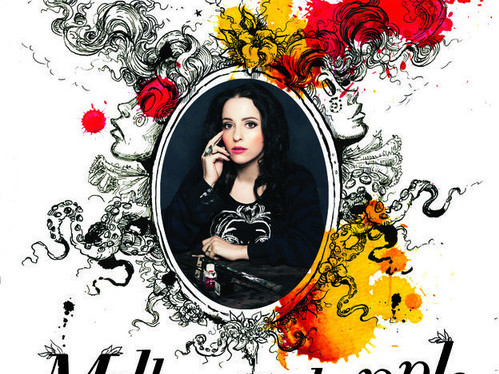People
Molly Crabapple’s Memoir Traces Her Rise as Artist and Activist
Molly Crabapple's memoir has received rave reviews.

Molly Crabapple's memoir has received rave reviews.

Cait Munro

Looking for the perfect holiday gift for the politically-engaged art lover in your life? Molly Crabapple’s memoir, Drawing Blood, debuted on December 1 and recounts Crabapple’s incredible artistic journey, which begins with art school, during which she worked as a so-called “naked girl for hire,” posing for drawing classes and for the SuicideGirls (the alt-pin up community that famously gave Richard Prince a taste of his own medicine).
The book then traces her rise as an artist and journalist, starting with her time as an illustrator for the debaucherous, high-end nightclub The Box, and continuing through her involvement with the Occupy Wall Street movement. It ends with her most recent journalistic expeditions to Syria, Iraq, and Dubai, much of which she chronicled for Vanity Fair and Vice.
Bustle is calling it “the one book every woman should read this month,” while Deb Olin Unferth, writing for the New York Times, heralds Crabapple as “a lion for her own cause—ferocious and feminist, hardworking and weepy—a new model for this century’s young woman.” Flavorwire calls her “the Millennial generation’s first great radical artist.”
“Art was a hobby for trust-fund kids,” Crabapple writes in Drawing Blood. “In New York, money was the silent grist for the creation of art. To talk about such things was to cheapen oneself as an artist. But the system was there, subtle and undeniable as a wall.”
When Occupy Wall Street burst onto the scene in 2011, just blocks from Crabapple’s apartment, she found its message her greatest inspiration yet.
“I had been going to protests for a long time. My dad is a professor and he’s Marxist, but for a long time I felt like going to protests was the same as — you know, when people go to church but they don’t really believe in God? But they think, oh, better just hedge my bets,” she told NPR. “And I went to the first day of Occupy, and then I went away for a few days, and when I came back, it had formed into a mini-city, with like a kitchen and a library and a place that gave out free clothing, and they had veterinarians, and the infrastructure of it was amazing.”
“[I]t was the first time where I felt like, this was a political space that I could stand in.”